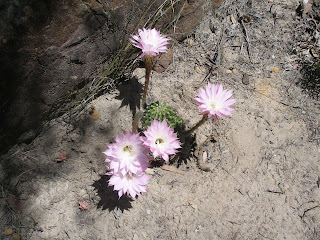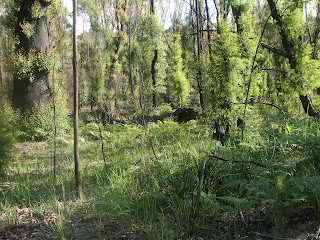September 2023
Greetings from Wat Buddha Dhamma, 10 Mile Hollow, Wisemans Ferry, NSW 2775, Australia; www.wbd.org.au
As many
people are aware, Theravada monasteries around the world undertake a
three-month 'Rainy Season Retreat' from July to October. Here in Australia this
corresponds to the mid-winter/early spring season, a suitable time to undertake
a formal retreat schedule. This means the monastery residents (aged monks
exempted) follow an 8-hour daily program of group sitting and walking practice.
As well as the weekly Saturday night Dhamma talk, there is also a weekly Sutta
Study class, which I am leading. The theme this year is 'The Eightfold Path in
Detail'.
https://www.youtube.com/results?search_query=Ajahn+Tiradhammo
This year
we have seven monks in residence, from seven different countries! Two of the
monks do not speak English, so we make do with Thai and mobile phone
translator. Also staying for a month of the retreat is Sister Ajita from
Indonesia, and, for the full period, our loyal team of upasikas: Annie, Aree
and Meghan, as well as Bryce, Luke and Lotus.
Before
the Rainy Season Retreat began, I took the opportunity for a trip to visit
family in Canada and give some teachings for Dhamma friends there. I had to do
a bit of hopping around to visit all three siblings, plus several cousins.
However, it was a delight to meet up again after nearly seven years. It seemed
such a long time that I was wondering if we would still recognize each other!
In the end it was no issue. While us older folks do not age so quickly, it was
a challenge to recognize the grand-nephews and grand-nieces.
I also
had the opportunity to visit Birken Monastery once again, an associated
monastery in central British Columbia where I spent two Rainy Season Retreats.
Ajahn Sona and Sister Mon are diligently keeping the place going, through three
years of Covid lockdown, at least one 'Arctic Winter' and a bush fire
evacuation. Ajahn Sona has suspended travels but has been putting much effort
into his video Dhamma talks, all professionally recorded and edited. He has
also been upgrading the facilities, including a five-star Mahathera hut for
visiting senior monks.
I gave a day-long meditation session in Victoria, B.C., on the theme of my book “Beyond I-making'. For this session, with more experienced meditators, I focused mainly on the Five Groups of Grasping, one of the two main sources of the I-making process. The talks can be downloaded from: www.victoriaims.org Then, shortly before my return to Sydney, I gave another day-long session in Vancouver, also on the theme of my book but with emphasis on the Six Senses, the other main source of making 'I'.
Wattles on the Fire Trail
I have
previously given several Saturday night talks on the profound benefits of the
Eightfold Path, particularly in its shortened form as Morality, Meditation and
Wisdom. The Buddha reminds us that the complete path to liberation comprises
these three factors. Of course, most religio/spiritual teachings emphasize the
benefits of Morality, however, few of them have discovered combining the
benefits of Meditation and Wisdom. Buddhists are extremely fortunate to be
readily given this complete path, rather than have to flounder around trying to
find the right combination of factors to fulfil the path to liberation. I
remember quite painfully my early struggles to find the right spiritual
practice, fortunately not going too far wrong or lost for too long a time. If
it had not been for a friend giving me a book on Buddhism at university, I may
still be scrambling around looking for some perfect solution to suffering.
Although
each of these three factors have a wide range of refinements and expressions,
it is the carefully balanced combination which allows a honing in on the right
path. Thus, the Buddha teaches that developing refined Morality, or Skilful
Living, provides a firm and stable basis for the development of Meditation.
Without a skilful lifestyle there is a danger that some of the states of mind
exposed by clear mindfulness or heightened collectedness will be too
over-powering for the unstable psyche. This can unfortunately lead to even more
mental disturbance rather than meditation supporting an increase in clarity and
calm.
A mind
endowed with increased clarity and calm is then able to observe more concisely
and consistently a deeper level of truth than our ego would normally allow.
Most of us, of course, observe the world through the lens of our ego's biases
and preferences – we see the 'truth' which our ego allows us to see. This is
usually not 'the way things really are' but only some shallow and corrupted
version of reality. No wonder we are so often out of harmony with reality and
find ourselves overcome with suffering.
With the steady development and careful balancing of these three factors of Skilful Living, Meditation and Wisdom our life and our mind become a receptive vessel to receive 'the way things really are' (without ego interference) and thus we can flow in harmony with reality beyond the reach of suffering. This possibility is available to us all. May we come to realize it.
Wishing you
all good health, well-being and the peace of Liberation.
P.S. Copies
of 'Beyond I-making' can be obtained at the monastery or the ebook version downloaded from the monastery website: www.wbd.org.au/news/book




























